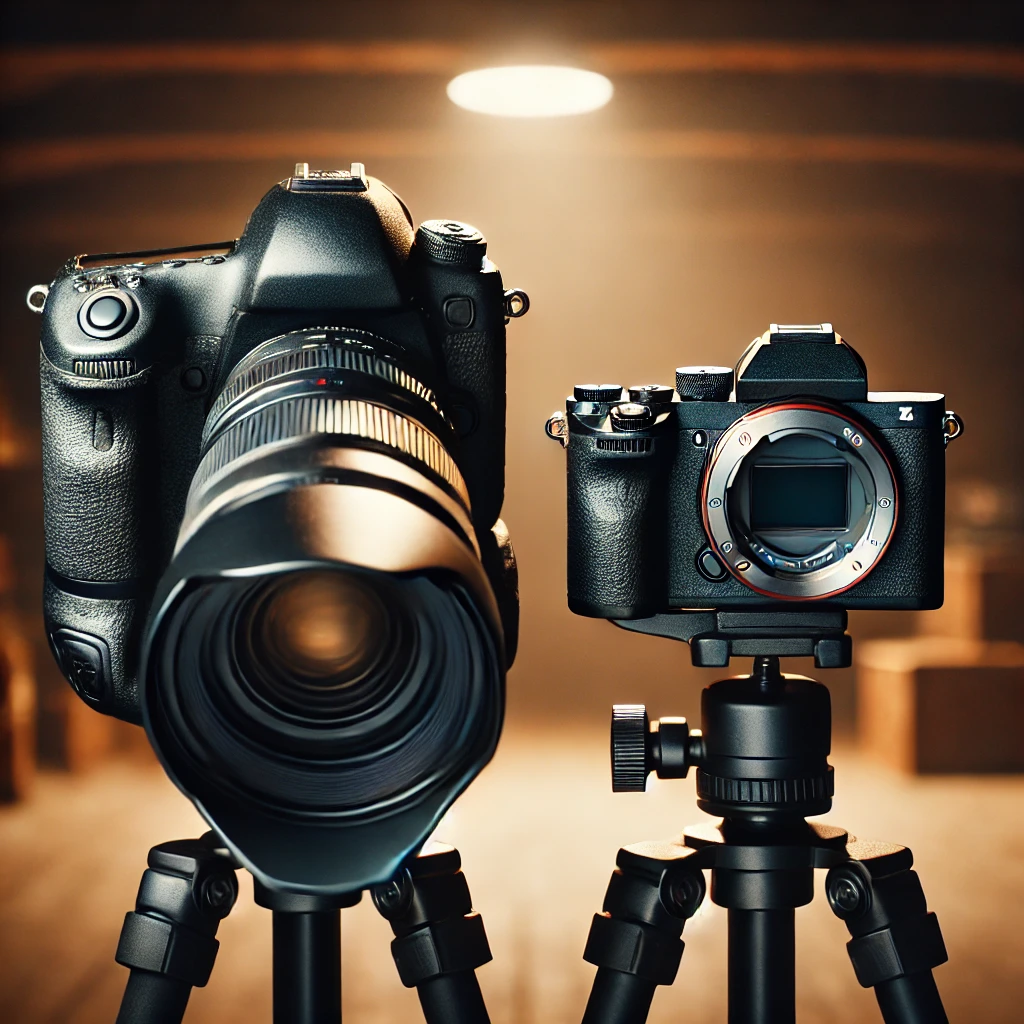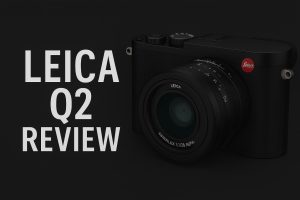Photography is an evolving art form, and choosing the right camera is crucial. With the rise of mirrorless cameras, the debate of DSLR vs Mirrorless has intensified. Both have their strengths and weaknesses, making it essential to understand the differences before investing in one.
This guide explores the pros and cons of each system, helping you determine which is best for your photography style and needs.
Understanding DSLR and Mirrorless Cameras
Before diving into the best cameras, let’s clarify what makes DSLR vs Mirrorless cameras different.
What is a DSLR Camera?
DSLR stands for Digital Single-Lens Reflex. These cameras use a mirror mechanism to reflect light into an optical viewfinder, allowing photographers to see precisely what they’re capturing.
What is a Mirrorless Camera?
Unlike DSLRs, mirrorless cameras eliminate the mirror mechanism. Instead, they use electronic viewfinders (EVF) or LCD screens to preview the shot.
DSLR vs Mirrorless: Key Differences
1. Size and Weight
- DSLRs: Bulkier and heavier due to the mirror system.
- Mirrorless: More compact and lightweight, making them travel-friendly.
2. Autofocus Performance
- DSLRs: Use phase-detection autofocus, great for tracking fast-moving subjects.
- Mirrorless: Offer advanced AI-driven autofocus with eye-tracking and better accuracy in low light.
3. Battery Life
- DSLRs: Typically have longer battery life since they don’t rely on electronic viewfinders.
- Mirrorless: Consume more battery due to constant use of the LCD screen or EVF.
4. Lens Availability
- DSLRs: Have a vast range of lenses developed over decades.
- Mirrorless: Expanding lens options, but still catching up to DSLR lens collections.
5. Viewfinder
- DSLRs: Optical viewfinder (OVF) for a real-time, lag-free view.
- Mirrorless: Electronic viewfinder (EVF) that offers real-time exposure preview but can have slight lag.
6. Image Quality
- Both systems offer similar image quality, but newer mirrorless models often include better in-body stabilization and AI-driven image enhancements.
Best DSLR Cameras for Photography in 2025
Here are some top-performing DSLR cameras for photography:
1. Canon EOS 5D Mark IV
- Sensor: Full-frame CMOS
- Resolution: 30.4 MP
- ISO Range: 100-32000
- Best For: Portraits, landscapes, and professional work
2. Nikon D850
- Sensor: Full-frame CMOS
- Resolution: 45.7 MP
- ISO Range: 64-25600
- Best For: High-resolution photography, landscapes
3. Canon EOS 90D
- Sensor: APS-C CMOS
- Resolution: 32.5 MP
- ISO Range: 100-25600
- Best For: Wildlife, sports photography
Best Mirrorless Cameras for Photography in 2025
If you prefer mirrorless cameras, here are the best choices:
1. Sony A7 IV
- Sensor: Full-frame
- Resolution: 33 MP
- Autofocus: Advanced AI-driven autofocus
- Best For: Hybrid photography (stills and video)
2. Canon EOS R6 Mark II
- Sensor: Full-frame CMOS
- Resolution: 24.1 MP
- Best For: Wedding photography, events
3. Nikon Z9
- Sensor: Full-frame stacked CMOS
- Resolution: 45.7 MP
- Best For: Sports, wildlife, professional photography
Who Should Choose DSLR?
- Professional photographers who want a tried-and-tested system.
- Users with existing DSLR lenses looking for a cost-effective upgrade.
- Those preferring optical viewfinders for a natural shooting experience.
Who Should Choose Mirrorless?
- Travel and street photographers who need a compact and lightweight setup.
- Videographers who benefit from advanced autofocus and in-body stabilization.
- Tech enthusiasts who want cutting-edge AI-driven photography.
Conclusion: DSLR vs Mirrorless – Which is Right for You?
Both DSLR and Mirrorless cameras have their strengths. If you value traditional photography with optical viewfinders and longer battery life, a DSLR is a solid choice. However, if you want advanced autofocus, portability, and cutting-edge technology, a mirrorless camera might be the way to go.
Choosing between DSLR vs Mirrorless ultimately depends on your photography needs, budget, and preference.
FAQ: DSLR vs Mirrorless
1. Is DSLR better than mirrorless for beginners?
Both are great, but mirrorless cameras tend to have easier controls, making them more beginner-friendly.
2. Which is better for video: DSLR or Mirrorless?
Mirrorless cameras generally offer better video autofocus and stabilization, making them superior for filmmaking.
3. Can I use DSLR lenses on a mirrorless camera?
Yes, with an adapter, you can use DSLR lenses on most mirrorless cameras.
4. Are DSLR cameras becoming obsolete?
While DSLRs are still widely used, mirrorless cameras are becoming the industry standard.
5. Which camera type is more expensive?
High-end mirrorless cameras tend to be more expensive due to new technology, but entry-level models can be budget-friendly.
6. What is the main advantage of a mirrorless camera?
Compact size, real-time exposure preview, and better autofocus are key benefits.
7. Which is better for low-light photography?
Both systems perform well, but mirrorless cameras with in-body stabilization often have the edge in low-light conditions.
Final Thoughts: Whether you go for a DSLR or Mirrorless camera, both offer incredible photography capabilities. Choose based on your shooting style, comfort, and future needs. Happy shooting!

Mobile Photography Hacks: Candid Moments with Your Phone

Professional Model & Portfolio Photoshoots: Show Your Best Work
-

Street Photography Tips, Effects & Poses – Complete Guide
-

Leica Q2 for Photography: Why It’s Loved by Photographers
Mobile Photography Hacks: Candid Moments with Your Phone
Discover high-impact mobile photography hacks to capture genuine, gorgeous candid moments with your phone. Learn practical tips, composition secrets, and pro techniques to turn everyday scenes into stunning visual stories. Introduction: The New Age of Mobile Photography Photography has evolved beyond heavy cameras, technical jargon, and expensive equipment. Today, the power to capture extraordinary moments
Professional Model & Portfolio Photoshoots: Show Your Best Work
” Discover how to plan, style, and execute stunning portfolio photoshoots that showcase your skills, personality, and versatility. This comprehensive guide covers professional tips, posing ideas, gear suggestions, and industry insights for models and photographers.” Introduction – Why Portfolio Photoshoots Are the Cornerstone of a Photographer’s Career A well-crafted portfolio photoshoot is more than a
Street Photography Tips, Effects & Poses – Complete Guide
Discover the ultimate guide to Street Photography with expert tips, creative effects, and dynamic poses. Learn how to capture authentic urban moments, master composition, and tell powerful visual stories through your lens. Article Outline 1. Introduction to Street Photography Street Photography is more than just taking pictures of people in public spaces — it’s about
Leica Q2 for Photography: Why It’s Loved by Photographers
Introduction: The Cult Status of the Leica Q2 The Leica Q2 is not just a camera—it’s a statement. Combining the heritage of German precision engineering with modern digital excellence, it holds a special place in the hearts of professional and passionate photographers alike. With its full-frame sensor, prime Summilux lens, and minimalist design, the Q2
Top Cameras Under ₹1 Lakh for Freelance Photography
Freelance photography is no longer a niche—it’s a booming creative profession that demands not only vision and hustle but also the right gear. Your camera isn’t just a tool; it’s your storytelling partner. If you’re a freelance photographer aiming to balance performance, versatility, and budget, investing in a cameras under ₹1 lakh can offer the
Top Features of Nikon D850 That Make It Ideal for Photoshoots
Explore the top features of the Nikon D850 that make it a powerhouse for photoshoots. From exceptional resolution to dynamic range, this detailed Nikon D850 guide is built for professional and aspiring photographers. 1. Introduction When Nikon launched the D850, it quickly earned a reputation as a flagship DSLR that redefined what photographers could expect






